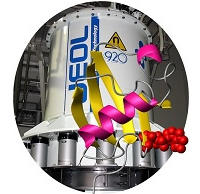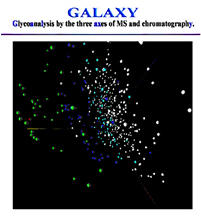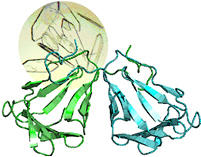Structural Biology and Biomolecular Engineering
Staffs
Koichi Kato, Ph.D., Professor
Maho Yagi, Ph.D., Assistant Professor
Maho Yagi, Ph.D., Assistant Professor
Research Project
- Structural Glycobiology
- Protein Sociology
- Structural Immunology
- NMR Structural Biology and Protein X-ray Crystallography
- Structure-based Biomolecular Engineering
Our research seeks to address the underlying mechanisms of biological functions of proteins and glycoconjugates. In particular, we are interested in molecular actions of the cellular machineries that contribute to fate-determination of proteins (folding, transport and degradation). Using structural biology approaches, we deal with unsolved issues in glycobiology. We use primarily nuclear magnetic resonance (NMR) spectroscopy and X-ray crystallography in addition to other biophysical, biochemical and molecular biology techniques to elucidate 3D structure, dynamics, and interactions of proteins and glycoconjugates at the atomic level. A knowledge gained in our laboratory will provide the structural basis for the rational drug design and biomolecular engineering that offer detailed mechanistic insights into biological systems.

(1) Structural biology approaches to neurodegenerative disorders: We use a 920 MHz ultra-high field NMR spectrometer working at Institute for Molecular Science (Okazaki) for the elucidation at atomic level of the functions of the protein machinery operating as "infrastructure of protein society" in cells. Disruption of these systems causes intractable diseases such as neurodegenerative disorders. We determined the 3D structure of the ubiquitin-like domain of parkin and provide structural basis for the underlying mechanism of parkinsonism.

(2) Structural glycobiology: Many of proteins in the living system express sugar chains, which mediate molecular recognition involved in cell-cell communications and contribute to protein folding and quality control in cells. To elucidate the underlying mechanisms of the sugar functions, we have been developing a systematic method for structural glycobiology by combined use of NMR spectroscopy, X-ray crystallography and multi-dimensional HPLC database "GALAXY" for glycosylation profiling and sugar library construction.

(3) Structure-based biomolecular engineering: The structural data prompt us to design neo-proteins with improved biological activities. One intriguing target in this project is curculin, a sweet protein isolated from a plant grown in Malaysia. We are studying molecular mechanisms for sweet-tasting and taste-modifying activities of this unique protein on the basis of structural and mutational data.
Contact Information
Koichi Kato
Graduate School of Pharmaceutical Sciences, Nagoya City University,
3-1, Tanabe-dori, Mizuho-ku, Nagoya 467-8603, Japan
E-mail:kkato@phar.nagoya-cu.ac.jp
TEL/FAX:+81-52-836-3447
Graduate School of Pharmaceutical Sciences, Nagoya City University,
3-1, Tanabe-dori, Mizuho-ku, Nagoya 467-8603, Japan
E-mail:kkato@phar.nagoya-cu.ac.jp
TEL/FAX:+81-52-836-3447

